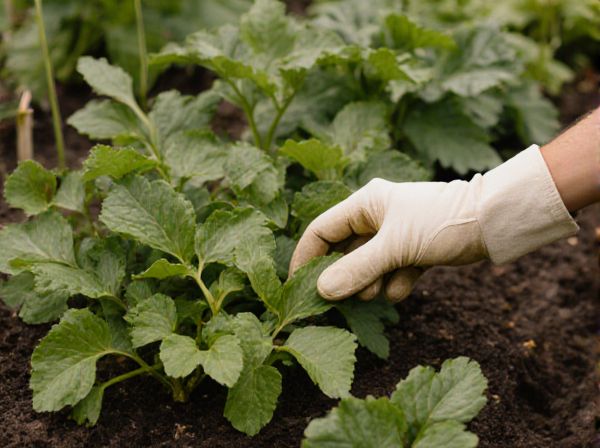
Selective Harvest vs Strip Harvest Illustration
Selective harvest involves carefully choosing specific trees or plants for removal, promoting forest regeneration and maintaining ecosystem balance. Strip harvest clears entire sections in narrow bands, allowing natural regrowth while minimizing soil erosion and habitat disruption. Both methods impact biodiversity differently, with selective harvest favoring conservation and strip harvest optimizing timber yield.
Table of Comparison
| Harvest Method | Description | Advantages | Disadvantages | Best Use Cases |
|---|---|---|---|---|
| Selective Harvest | Targeted removal of specific trees or crops based on criteria like size, species, or quality. | Maintains forest structure, promotes biodiversity, sustainable yield. | Labor-intensive, slower harvest, higher cost. | Mixed forests, sustainable forestry, high-value timber. |
| Strip Harvest | Removal of all trees or crops in defined strips or sections. | Efficient, easier mechanization, facilitates natural regeneration. | Greater environmental impact, potential soil erosion. | Even-aged stands, reforestation projects, easier access areas. |
Understanding Selective Harvest and Strip Harvest Techniques
Selective harvest involves carefully choosing specific trees to cut based on criteria such as age, health, or species, promoting sustainable forest management and biodiversity. Strip harvest removes all trees within a narrow, linear section of the forest, facilitating easier reforestation and minimizing soil disturbance while altering habitat conditions. Understanding these techniques is essential for balancing timber production with ecological impact and long-term forest health.
Key Differences Between Selective and Strip Harvesting
Selective harvesting targets specific trees based on criteria such as age, species, and health, promoting sustainable forest management by preserving overall ecosystem structure. Strip harvesting involves removing all trees in designated narrow strips, facilitating natural regeneration while minimizing soil disturbance across the landscape. Key differences include the selective method's focus on maintaining biodiversity and stand continuity versus strip harvesting's efficiency in regenerating uniform growth areas.
Advantages of Selective Harvest in Gardens
Selective harvest in gardens preserves plant diversity by allowing only mature fruits or vegetables to be picked, promoting continuous growth and higher overall yield. This method minimizes plant stress and soil disturbance, supporting healthier root systems and beneficial microorganisms. By targeting specific crops, selective harvest reduces waste and enhances garden sustainability compared to strip harvest techniques.
Benefits of Strip Harvest for Efficiency
Strip harvest enhances operational efficiency by enabling larger volumes of crops to be collected quickly using mechanized equipment, reducing labor costs and time in the field. This method minimizes repeated passes over the same area, preserving soil structure and lowering fuel consumption during harvesting. Increased throughput from strip harvesting supports timely crop processing and market delivery, optimizing the overall supply chain performance.
When to Choose Selective Harvesting
Selective harvesting is ideal when preserving biodiversity and maintaining forest structure are priorities, such as in mature or ecologically sensitive areas with uneven-aged stands. Strip harvesting is better suited for regenerating even-aged forests quickly but can disrupt habitats and soil stability. Choosing selective harvesting enhances ecological balance, supports wildlife habitats, and promotes sustainable forest management over the long term.
Ideal Scenarios for Strip Harvesting
Strip harvesting is ideal for managing forest regeneration in areas where maintaining continuous forest cover is crucial, such as wildlife habitats that require varying light conditions. This method suits uneven-aged stands and encourages natural regeneration by exposing soil in narrow strips while preserving adjacent mature trees for seed sources. It is particularly effective in landscapes vulnerable to erosion or requiring protection of microclimates within the forest ecosystem.
Impact on Yield: Selective vs. Strip Harvest
Selective harvest maintains higher overall yield by targeting only mature crops, allowing regeneration and sustained productivity over time. Strip harvest involves removing entire sections uniformly, which can lead to immediate high yield but risks soil depletion and reduced future output. Studies indicate selective harvest optimizes long-term yield stability compared to strip harvest's short-term gains.
Plant Health: Comparing Selective and Strip Methods
Selective harvest promotes plant health by preserving a diverse age structure and minimizing soil disturbance, which supports regrowth and biodiversity. Strip harvest, involving the removal of entire sections, can increase vulnerability to pests, diseases, and soil erosion due to exposed roots and lack of plant cover. Maintaining healthier plants through selective methods enhances long-term ecosystem stability and productivity.
Tools Required for Selective and Strip Harvest
Selective harvest requires specialized tools such as pruning shears, pole saws, and hand pruners to carefully remove specific trees or branches while preserving the surrounding vegetation. Strip harvest typically involves heavy machinery like feller bunchers, harvesters, and skidders designed to efficiently clear wide strips of forest with minimal manual labor. Both methods rely on equipment tailored to their scale and precision, influencing operational efficiency and environmental impact.
Best Practices for a Successful Harvest
Selective harvest targets only mature or high-quality trees, preserving overall forest health and biodiversity, while strip harvest clears designated sections to promote regeneration. Best practices include careful planning of harvest zones, minimizing soil disturbance, and monitoring regeneration success to ensure sustainable yield and ecosystem balance. Using GPS mapping and periodic assessments enhances precision and supports long-term forest productivity.
Selective Harvest vs Strip Harvest Infographic

 gardendif.com
gardendif.com